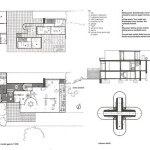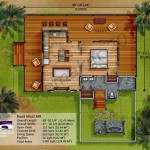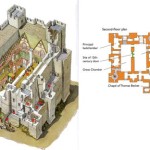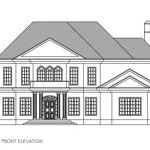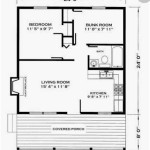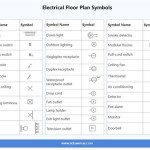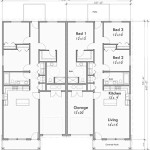Unveiling the Secrets: A Deep Dive into the Haunted Mansion Floor Plan
The Haunted Mansion, a beloved attraction at Disney theme parks worldwide, captivates guests with its intricate theming, memorable characters, and spooky atmosphere. While much attention is given to the ride's special effects and narrative, the careful design of the building itself, particularly its floor plan, plays a crucial role in creating the immersive experience. Understanding the layout of the Haunted Mansion sheds light on how Imagineers use architecture and spatial design to enhance the illusion of a haunted estate.
The design of the Haunted Mansion varies slightly between different Disney parks, but a general understanding of a "typical" layout can be established by focusing primarily on the original Disneyland version and noting key differences in other iterations. The Mansion aims to present a seemingly endless experience, even within a relatively confined physical space. This is achieved through a combination of hidden passageways, forced perspective, and clever manipulation of the flow of guests.
The external facade of the Haunted Mansion is itself a carefully considered element of the overall design. In Disneyland, the facade is designed to appear old and neglected, creating an immediate sense of foreboding. The architecture blends elements of antebellum and Gothic styles, contributing to the overall sense of mystery and history. The queue area, often winding through overgrown gardens and a pet cemetery, serves to further immerse guests in the desired atmosphere before they even enter the building.
Key Point 1: The Pre-Show and Initial Immersion
The experience truly begins in the pre-show area, often a stretching room or similar space designed to disorient and entertain guests while they gather. The stretching room sequence, featuring portraits that elongate to reveal macabre scenes, serves several purposes. First, it manages guest flow and organizes them into manageable groups for the ride vehicles. Second, it sets the tone for the experience, establishing the playful yet eerie atmosphere that defines the Haunted Mansion. Finally, it conceals the transition between the external facade and the actual ride building, which is often located some distance away and on a different elevation.
The architectural deception of the stretching room is a crucial example of how the floor plan works. In Disneyland, the room is effectively an elevator, slowly descending to a lower level where guests board the Doom Buggies. This downward movement is cleverly disguised, and many guests are unaware that they are being transported to a different physical location. In other versions of the Haunted Mansion, such as at Walt Disney World, the stretching room is a static space, and the walls rise instead of the floor descending. Regardless of the method used, the aim is to create a sense of disorientation and anticipation.
Following the stretching room, guests typically pass through a series of dimly lit corridors and parlors, filled with haunted furniture and other eerie props. These areas serve to further build anticipation and establish the narrative of the ride. The design of these spaces is deliberately confusing, with twisting hallways and hidden doorways that create a sense of unease. The floor plan here is intentionally irregular, designed to make guests feel lost and vulnerable. It’s a crucial element to enhance the feeling that they are inside a real haunted house.
Key Point 2: The Ballroom Scene and Its Architectural Significance
One of the most iconic scenes in the Haunted Mansion is the ballroom, a lavish space filled with ghostly dancers and spectral musicians. The illusion of the ballroom's vastness is achieved through a combination of Pepper's ghost effect, strategically placed mirrors, and a carefully designed floor plan. The Pepper’s ghost effect is achieved by using a large sheet of glass to reflect the ghost figures from another room or hidden space below. The placement of this glass, the lighting in the ballroom, and the angles of the reflections are all carefully calculated to create the illusion that the ghosts are dancing among the guests.
The floor plan of the ballroom area is specifically designed to accommodate the Pepper's ghost effect and the required infrastructure. Hidden passages and working spaces are located beneath the main ballroom floor, allowing for the projection of the ghostly figures. The placement of the Doom Buggies is also carefully considered, ensuring that guests have a clear view of the ballroom scene while maintaining the flow of the ride. The layout is not just about aesthetics; it is about integrating complex special effects into a seamless and believable narrative.
Furthermore, the illusion of depth in the ballroom is enhanced by forced perspective. The ghostly figures in the distance are smaller than those in the foreground, creating the impression of a much larger space. The floor plan incorporates subtle variations in the size and positioning of the props and figures to reinforce this illusion. The architecture supports the visual trickery making the room feel much larger than it is in reality.
Key Point 3: Controlled Viewing and the Ride Path
The Haunted Mansion's floor plan is intrinsically linked to the design of the ride system itself. The Doom Buggies, or Omnimovers, are constantly moving, and the layout of the ride is designed to maximize the impact of each scene while maintaining a smooth and continuous flow. The path of the Doom Buggies is carefully choreographed, guiding guests through a series of carefully curated vignettes. Each scene is designed to be viewed from a specific angle and at a specific pace, ensuring that guests have the optimum experience.
The floor plan also incorporates dark areas and sharp turns to create a sense of anticipation and disorientation. These strategically placed elements break up the visual flow of the ride, preventing guests from seeing too much of the attraction at once. This helps to maintain the element of surprise and keeps guests engaged throughout the experience. The limited light and obscured views add to the haunted atmosphere.
The layout of the ride is also designed to manage capacity and minimize bottlenecks. The Doom Buggies are constantly loading and unloading, and the floor plan ensures a smooth and efficient flow of guests. Hidden passages and maintenance areas are strategically located throughout the building, allowing Imagineers to access and maintain the attraction without disrupting the guest experience. This hidden infrastructure ensures the longevity of the ride.
Beyond these key aspects, the Haunted Mansion floor plan incorporates numerous other details that contribute to the overall experience. The use of different ceiling heights, varying floor textures, and strategically placed sound effects all play a role in creating a believable and immersive environment. The placement of lighting fixtures, the use of shadows, and the overall color palette are all carefully considered to enhance the spooky atmosphere. These details show a comprehensive architectural plan beyond just moving guests from point A to point B.
The differences between the various Haunted Mansion iterations are largely related to the specific location and layout of each park. While the core elements of the ride, such as the stretching room, the ballroom scene, and the ghost host narrative, are generally consistent across all versions, the floor plan and physical structure of the buildings may vary significantly. For example, the Haunted Mansion at Tokyo Disneyland is located on a different side of the park than the Disneyland version, which influences the surrounding landscape.
The Haunted Mansion’s design continues to serve as an exemplary model for immersive storytelling in themed entertainment. Imagineers create a convincing illusion of a haunted house. The integration of the architectural design, the floor plan, and the ride system demonstrates a deep understanding of how space can be used to evoke emotion and create lasting memories. It blends a physical building with a virtual experience. The haunted mansion floor plan displays a dedication to detail. The result is an attraction that has captivated generations of Disney fans.

Haunted Mansion Second Floor Plan By Shadowdion On Deviantart

Mansion Furniture Tokens 2 Minute Tabletop

Haunted Mansion Ride Disneyland Blueprint Disney Black Ink Print Grunge Poster

Haunted Mansion Second Floor Plan Wip By Shadowdion

Haunted Mansion Grounds Floor Plan By Shadowdion On Deviantart

Haunted Mansion Ride Disneyland Blueprint Disney Black Ink Print Poster

Disneyland S Haunted Mansion Track Layout Disney O Rama

Backstage Secrets Of Disney World S Haunted Mansion Our Magical Moments

Haunted Mansion Floor Plan 1st Story By Nanakifreak13 On Deviantart

Haunted Mansion Ride Disney World Blueprint Blue Ink Print Gray Poster Stretching Room Hong Kong

